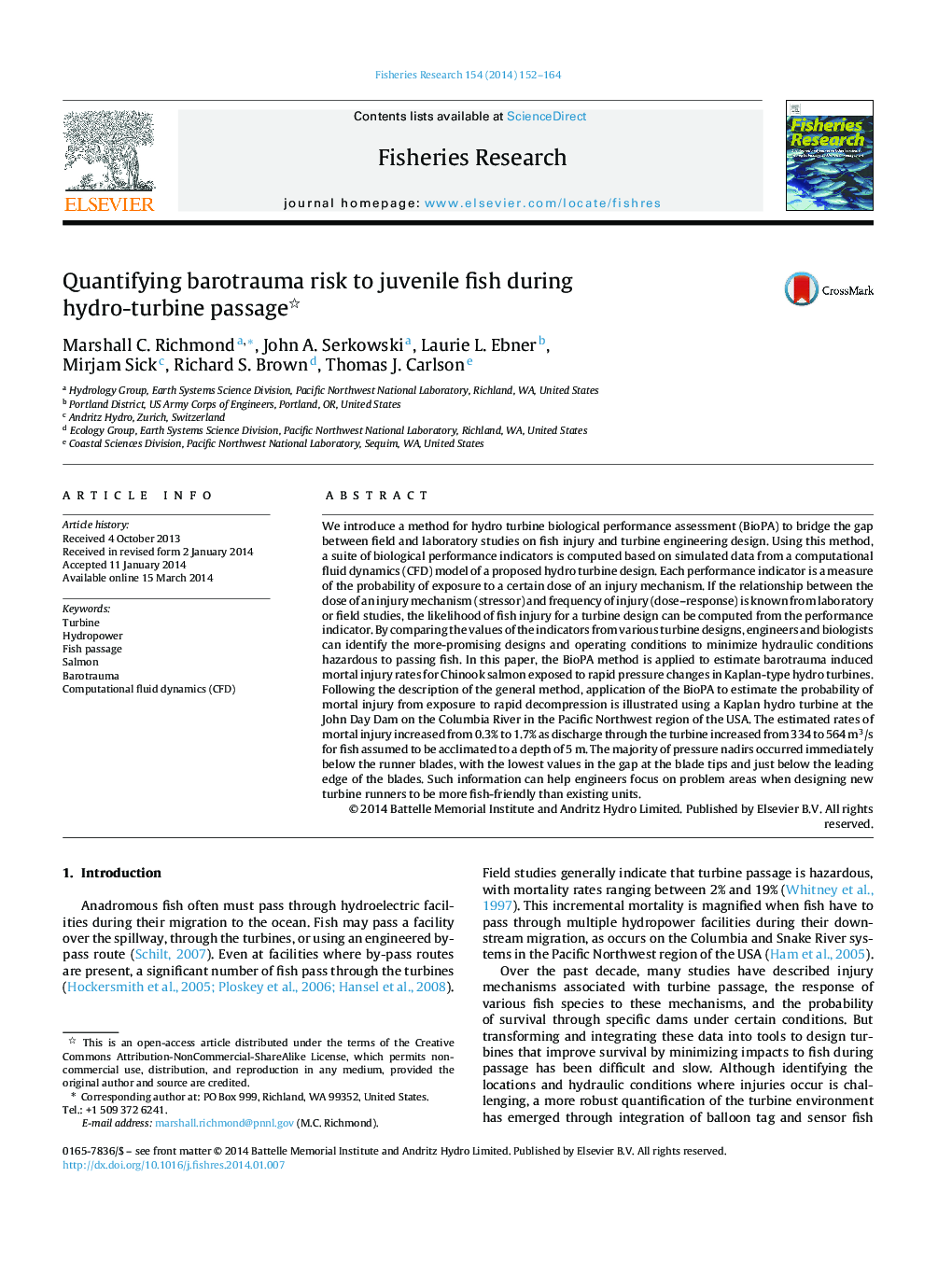| کد مقاله | کد نشریه | سال انتشار | مقاله انگلیسی | نسخه تمام متن |
|---|---|---|---|---|
| 6385915 | 1626814 | 2014 | 13 صفحه PDF | دانلود رایگان |
عنوان انگلیسی مقاله ISI
Quantifying barotrauma risk to juvenile fish during hydro-turbine passage
ترجمه فارسی عنوان
کمبود خطر باروتروما در ماهیان جوان در طی عبور از توربین هیدروژنی
دانلود مقاله + سفارش ترجمه
دانلود مقاله ISI انگلیسی
رایگان برای ایرانیان
کلمات کلیدی
موضوعات مرتبط
علوم زیستی و بیوفناوری
علوم کشاورزی و بیولوژیک
علوم آبزیان
چکیده انگلیسی
We introduce a method for hydro turbine biological performance assessment (BioPA) to bridge the gap between field and laboratory studies on fish injury and turbine engineering design. Using this method, a suite of biological performance indicators is computed based on simulated data from a computational fluid dynamics (CFD) model of a proposed hydro turbine design. Each performance indicator is a measure of the probability of exposure to a certain dose of an injury mechanism. If the relationship between the dose of an injury mechanism (stressor) and frequency of injury (dose-response) is known from laboratory or field studies, the likelihood of fish injury for a turbine design can be computed from the performance indicator. By comparing the values of the indicators from various turbine designs, engineers and biologists can identify the more-promising designs and operating conditions to minimize hydraulic conditions hazardous to passing fish. In this paper, the BioPA method is applied to estimate barotrauma induced mortal injury rates for Chinook salmon exposed to rapid pressure changes in Kaplan-type hydro turbines. Following the description of the general method, application of the BioPA to estimate the probability of mortal injury from exposure to rapid decompression is illustrated using a Kaplan hydro turbine at the John Day Dam on the Columbia River in the Pacific Northwest region of the USA. The estimated rates of mortal injury increased from 0.3% to 1.7% as discharge through the turbine increased from 334 to 564Â m3/s for fish assumed to be acclimated to a depth of 5Â m. The majority of pressure nadirs occurred immediately below the runner blades, with the lowest values in the gap at the blade tips and just below the leading edge of the blades. Such information can help engineers focus on problem areas when designing new turbine runners to be more fish-friendly than existing units.
ناشر
Database: Elsevier - ScienceDirect (ساینس دایرکت)
Journal: Fisheries Research - Volume 154, June 2014, Pages 152-164
Journal: Fisheries Research - Volume 154, June 2014, Pages 152-164
نویسندگان
Marshall C. Richmond, John A. Serkowski, Laurie L. Ebner, Mirjam Sick, Richard S. Brown, Thomas J. Carlson,
